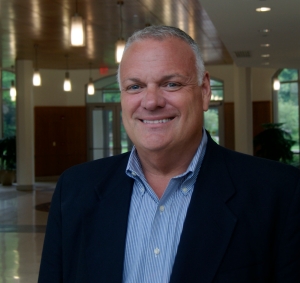15-Minute Huddles Address Patient Safety
Nurse Executive's Scholarly DNP Project Focuses on Early Detection of Errors

With two decades of healthcare leadership experience, Paul Minnick ’18 DNP, RN, NEA-BC has become a firm believer in gathering hospital staff into a daily proactive,
pre-emptive huddle on patient safety. He takes his job “very seriously,” and with good reason. As senior vice president and chief operating officer for the regional Virtua Voorhees Hospital and campus in New Jersey, he provides executive oversight of all operations, services and equipment, among other extensive responsibilities.
Yearly, Virtua Voorhees handles “85,000 emergency department patients,
nearly 6,000 births, 30,000 admissions and 5,000 surgeries,” Dr. Minnick notes.
But those people are not just numbers on a spreadsheet. “The buck stops with me
for their safety and quality of care,” he observed in a recent interview about his
experience in the Fitzpatrick College of Nursing’s Doctor of Nursing Practice
(DNP) Program.
Dr. Minnick recognized that hospitals can harm patients and that there needed
to be broader dialogue around safety. Examining the literature, he noted that
safety huddles reduce re-admission rates and improve communication and
transparency, as well as team member trust and event reporting. Thus, he chose
for his DNP scholarly project “Creating a Safe Environment for Open Dialogue
of Gaps in Patient Safety for Hospital Leadership Through the Implementation
of a Daily Safety Huddle.”
Each weekday at 9:30 a.m., Dr. Minnick guides that Safety Huddle,
focusing on early detection of errors that could lead to harm of hospitalized patients. For 15 efficient minutes, his department leaders stand together and
follow a prescribed agenda. They report on any safety concerns from the previous
24 hours and any anticipated issues for the coming 24.
"Daily safety huddles provide a forum for interprofessional teams to analyze
complex practice and organizational issues in a safe environment,” Dr. Minnick notes. As evaluation leads to even more improvements, he will continue to model
the leadership behavior that fosters open dialogue on threats to patient safety.
